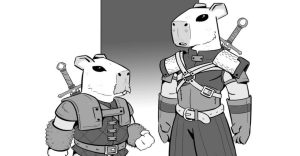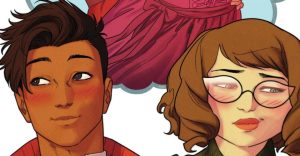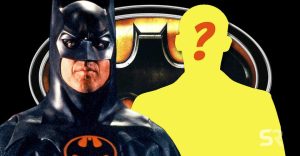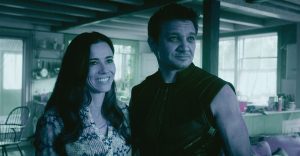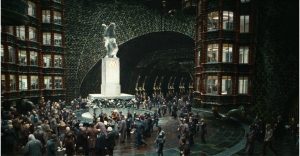Is ‘Batman: The Killing Joke’ Even A Good Story?
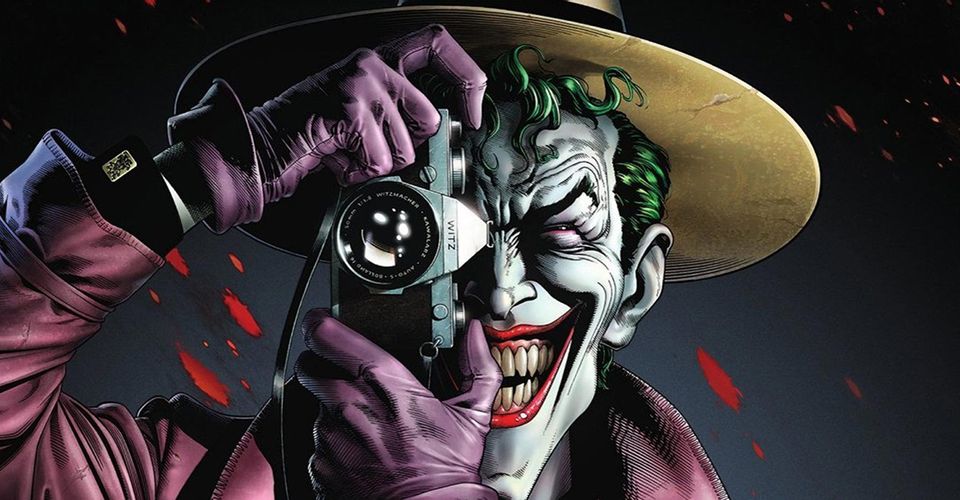
The field of comics, like any art form, is driven and shaped by the landmark stories that have arisen out of it, but from time to time, it’s best to reevaluate these stories on their merits. Since its release in 1988, Alan Moore and Brian Bolland’s Batman: The Killing Joke has been one of the most influential stories not only to the long mythos of Batman and The Joker, but also to superhero stories in general. Hailed as a brilliant and somewhat brutal deconstruction of the pair, Moore’s portrayal of Joker’s origin as a failed comedian driven insane by “one bad day” has only become more relevant to the character as time has gone on, influencing almost every portrayal of the character in television and cinema from Batman’s Jack Nicholson, The Dark Knight’s Heath Ledger and most recently Joker’s Joaquin Phoenix. But is Batman: The Killing Joke actually any good?
Influence does not necessarily indicate quality. Certainly, Bolland and Moore are two of the most lauded creators in the industry, and it would be difficult to gainsay any work by the duo, particularly Bolland in this particular book. What’s more, The Killing Joke has been a critical success for decades, won an Eisner Award upon its release, and has enjoyed massive surges in popularity with every successive, yet divisive film adaptation.
The story is best described as a realistically-oriented deconstruction of the classic “Golden Age” Batman yarn and concerns a fiendish scheme by the Clown Prince of Crime in which he shoots and paralyzes Barbara Gordon, Batgirl, in order to drive her father, Commissioner Jim Gordon mad with grief. Interwoven into this twisted tale is the story of one Joe Kerr and his increasingly tragic and sympathetic life events that led him to become The Joker (possibly, the truthfulness of this origin is intentionally left vague). Fans and critics have since celebrated the absolute clarity with which Moore and Bolland distill the dichotomous nature of Batman and his arch-nemesis, and how closely they mirror each other, for better or for worse.

But the creators have often responded less glowingly about their own feelings towards the work in interviews. Moore himself has stated that he found the final product to be weak because it was “very, very nasty” when compared with his contemporary work Watchmen in an interview with Salon.com.
I’ve got no problem with nasty scenes as long as they are for a purpose. There are some nasty scenes in Watchmen, but Watchmen is an intelligent meditation on the nature of power so it is actually talking about something which is relevant to the world in which we all live. Whereas in The Killing Joke, what you’ve got is a story about Batman and the Joker, and while it did draw interesting parallels between these two fictional characters, at the end of the day that’s all they are, fictional characters. They’re not even fictional characters that have any bearing on anyone you’re likely to meet in reality.
And once this criticism takes root, it becomes difficult to untangle it from what many consider to be the best aspects of the story.
The Problem with Realism

The main issue, aside from Moore’s high brow approach which for possibly the only time in his career does him a disservice artistically here, would be the hyper-realism of Brian Bolland within the fantastical world of Batman. When conceived by Bill Finger and Bob Kane in the 1940s, the world of Batman was a colorful, if not slightly disturbing, detective-hero fantasy about a man who dressed as a bat and defeated equally colorful criminals. There’s a darkness there, these are madmen who engineer elaborate criminal plots and deathtraps, but there’s very little realism because it’s meant to be a children’s adventure series. Bolland’s detailed realism, while fascinating, removes the rosy-shaded filter of yesteryear’s innocent fun and instead portrays Gotham and its costumed inhabitants as clearly unhinged and obsessed monsters, as they would be if this were the real world.
And this actually harms the overall story. It may seem counter-intuitive, Bolland’s art in The Killing Joke is perhaps among the best of any comic ever, and the retro, stringently focused panel layout is both a beautiful homage to the stories it is continuing as well as a fitting commentary on the unchanging nature of superhero subject matter the pair are deconstructing. But there’s a caveat to it: given the gruesome, often perverse content of this story, there’s a demented quality that begins seeping into the moral fable being discussed. It’s all due to the realism: you can’t finish the story and believe that Batman is meant to be a titan of ethical behavior, because he’s almost the exact same as his enemy.

For instance, after Commissioner Gordon’s abduction, Batman is shown committing violent acts against Gotham’s underbelly in a fruitless series of interrogations. How different is breaking a few thugs’ arms from the torture Joker inflicts upon Gordon? Likewise, Joker’s unfathomable cruelty in assaulting Batgirl and subjecting Gordon to psychological torture is said to be based on his idea that he can prove people aren’t so different from him; they just need one bad day to turn them as “crazy” (by which he implies evil) as he is. However, the disconnect between the reader’s obvious horror at Joker’s sadism, and the sympathetic origin he’s given in the flashback sequences themselves, fail the story under scrutiny when placed in the more realistic worldview Bolland and Moore weave.
This ultimate lack of sympathy the reader feels for Joker is then directly compared to Batman, whom Bolland draws as a satirically real devil-man who spends every waking moment obsessing over the criminal activities of his rogues’ gallery. Leaving readers to wonder: is Batman’s declaration in the story that he wishes to rehabilitate Joker and avoid a tragic ending enough of a moral sentiment to justify his existence, and separate him from his adversary? Does it even makes sense? No matter how sympathetic one may find Joe Kerr’s origin, a person like Joker would not feasibly be considered redeemable. So there’s an implication of self-aggrandizing indulgence Batman’s giving to his “code” which fails to be rational or reasonable, no matter how idealistic the reader might find him.

This lack of sympathy for the two characters makes the story weaker when put up against the stakes and ethical quandaries being discussed. When combined with the shocking sadism Joker exercises on Barbara and Jim Gordon, the reader is left to wonder whether this idea that Batman is responsible for Joker’s obsession by virtue of his own costumed crusade might actually be close to the truth of the matter. If so, then what Moore seems to be implying is that the very idea of Batman himself is a harmful one, as by extension would be most superheroes.
And while this may have been his point, he’s dealing with a world in which maniacal costumed clowns go around meticulously renovating and painting abandoned carnivals in order to provide a theatrical battleground for their fiendish schemes. It’s not meant to be that real, and in many ways, it can’t be. There are surely good philosophical superhero stories to be told, but there are limitations within the infrastructure of the “Batman” world itself that make attempts to portray it as “more real,” like The Killing Joke does, a bad idea. The reader doesn’t need to see Barbara injured and disrobed, or Jim led on a leash by a leather-clad dwarf to understand that suffering and humiliation aren’t funny, and it takes strength and fortitude to withstand the unfair cruelties that may come at the hands of evildoers, or even random fate. Because there isn’t enough relatability in the characters to justify the use of perverse shock and horror in that lesson, they’re not real enough.

Perhaps a similar Batman story that works slightly better would be Bruce Timm’s “Mad Love,” which centers on Harley Quinn’s origins as Joker’s psychologist and deconstructs their relationship as an abusive nightmare for her. There are two strengths this story has over The Killing Joke despite their similarities. One, Harley is not portrayed as a realistic person, her characterization is excessively cartoonish, so our sympathy doesn’t have to be as centered as it might be for a more grounded portrayal, though she is sympathetic. Second, she’s not compared to the hero, so the story itself isn’t a deconstruction of how evil and good reflect: it’s a human story about a very unfortunate woman.
Ultimately, the iconic status of Batman and Joker is what keeps the quality of The Killing Joke from holding up under scrutiny. If anything, it is merely a cautionary tale of how an imaginary “psychotic” person might descend into violence. “…I suppose that if there was anything actually being said in ‘The Killing Joke,’ it was that everybody has probably got a reason for being where they are, even the most monstrous of us,” Moore once said. And it’s an interesting message. But that doesn’t make it a good story.
Source: Salon.com
About The Author













